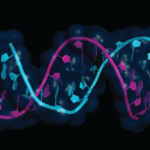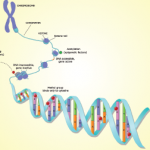WASHINGTON, D.C.—Although genes clearly play a role in the prevalence of rheumatoid arthritis (RA), that role may be less influential than scientists once believed. Other factors may influence susceptibility more, including epigenetics, innate immunity, and even preventable environmental stresses like cigarette smoking.
“Susceptibility to RA is more than our genes,” said Gary S. Firestein, MD, professor of medicine and dean of translational medicine at the University of California, San Diego School of Medicine. Dr. Firestein delivered the Rheumatology Research Foundation’s Edward D. Harris, Jr. Memorial Lecture, “Pathogenesis of Rheumatoid Arthritis: The Voyage from Pre-Rheumatoid Arthritis to Joint Destruction,” at the 2012 ACR/ARHP Annual Meeting, held here November 9–14. [Editor’s Note: This session was recorded and is available via ACR SessionSelect at www.rheumatology.org.] His research on the origins of RA was conducted in collaboration with William Arend, MD, at the University of Colorado, Denver.
Before classic symptoms of RA appear, what occurs at the cellular level to lay the groundwork for disease development? A particular genetic makeup is merely one component of the pathway to RA, said Dr. Firestein. “Genes are ‘predetermined’ influences. They help define who we are, but then this is influenced by epigenetics, environment, and innate immunity.”
Past research into the role of T cells, B cells, cytokines, and antigen-presenting cells, and how their interactions lead to synovial inflammation, contributed to the development of now–widely used treatments like anticytokine therapy, Dr. Firestein explained. Now, newer research on the pathogenesis of RA might one day lead to more effective treatments or allow rheumatologists to intervene before symptoms appear, he said.
“We are challenging the concept that RA begins as a synovial disease marked by autoimmunity,” he added. Scores of genes, especially HLA-DR, can influence prevalence of RA, but these have only a modest influence on disease susceptibility. Genes can factor into RA susceptibility in the case of the major histocompatibility complex, or MHC. The particular amino acids that are on the surface of the HLA-DR MHC molecule bind to key peptides that are, in turn, recognized by T-cell receptors, triggering an immune response.
“Genes clearly play a role in RA, but not necessarily a dominant role,” said Dr. Firestein. Illustrating this point is the fact that there is a surprising low concordance of RA in identical twins. Nongenetic influences, including epigenetics, innate immunity, infections, in utero or post-birth exposure to harmful elements, or stresses like cigarette smoke, all can contribute to a person’s susceptibility to and development of RA. “In fact, the risk for RA could be more than 80% to 90% nongenetic,” he added.
Smoking and RA Risk
The best example of the interaction between genes and the environment is the connection between cigarette smoking and RA risk, said Dr. Firestein. For example, a person who is a nonsmoker and does not carry the HLA-DR risk gene has a low risk of susceptibility. Nonsmokers who have two copies of the gene have a four- to sixfold increase of susceptibility. People who have two copies of the gene who also smoke have up to a 40-fold increase, he said. Why does this occur? “It’s almost certainly related to environmental exposures and the cellular response to this stress,” Dr. Firestein said.
Citrullination Effects
Citrullination of proteins like vimentin occurs before synovial inflammation begins in RA. Once they are citrullinated, the altered or modified proteins can be mistaken for foreign antigens by the immune system, sparking the inflammatory response. RA-associated MHC proteins bind to many citrullinated proteins more avidly than they do to the native molecules.
Citrullination occurs due to many types of environmental stress, Dr. Firestein said. Very few bacteria are able to citrullinate peptides, but one is the bacterium present in periodontitis, which is associated with an increased risk of RA. Tobacco smoke also can cause peptide modification. “Smoking actually creates these neoepitopes—altered proteins—in the airway,” he said. Citrullinated fibronectin and vimentin activate T cells in patients with the risk-associated HLA-DR genes more effectively than normal peptides, with increased T cytokine production, he added. “This is an appropriate immune response to an altered peptide rather than true autoimmunity.”
Citrullinated proteins have been found in the airways of smokers, further highlighting the connection. Although poor dental hygiene and habitual cigarette smoking can contribute to many different health problems, a person’s genetic makeup plays a role in whether or not they will develop RA, Dr. Firestein added. “People who don’t have the correct genes would be far less likely to see this phenomenon,” he said.
Production of these antibodies precedes synovitis in RA. Most important, one can detect evidence of them five to 10 years before symptoms occur, Dr. Firestein said. Many different types of antibodies are involved, including anticitrullinated protein antibodies (ACPAs) in the majority of patients. Other antibody systems also exist, such as to carbamylated proteins. “If you are ACPA positive and you have arthralgias, you have about a 40% chance of going on to develop RA within two years,” he said.
For RA to kick into motion, other components are required, including Fc receptors, mast cells, complement, and immune complexes, Dr. Firestein explained. Immune complexes provide pathogenic antibodies access into the joints and initiate inflammation by binding to the surface of cartilage, fixing complement, and then triggering RA. Even irrelevant immune complexes not directed against joint antigens can allow these antibodies penetrate into the joint, said Dr. Firestein.
Fc receptors are proteins found on the surfaces of macrophages and other cells involved in the immune response. When they are on the surface of mast cells, these proteins bind immune complexes, release vasoactive mediators, and increase permeability of the antigens into the joint tissues, he said. Complement also plays an important role in the triggering process. “Complement is consumed in the joints of people with RA,” Dr. Firestein explained.
Triggering the Cause of Active Disease
Evidence of RA can be detected in mice before signs of inflammation present, he said. Scientists still don’t know what triggers active disease. “The process probably involves evolution of a normal immune response to altered proteins to true autoimmunity,” said Dr. Firestein. “The transition to chronic disease occurs quickly.” The activation of certain cytokine networks leads to the development of aggressive synoviocytes in the joint lining, “cells that are almost tumorlike in their destruction of joints,” he added. The most important T-cell cytokine networks in RA development appear to involve TH-1 and TH-17 cells.
Epigenetics, or heritable changes in the genome without changes in the DNA sequence itself, is a key element in RA pathogenesis, including DNA methylation. “When DNA methylation goes awry, it can have a deleterious effect, including cancer,” said Dr. Firestein. DNA methylation can also alter the balance between TH-1 and TH-2 cells and contribute to the transformation of RA synoviocytes.
Epigenetic changes last for generations, Dr. Firestein said. “Epigenetics is designed to protect individuals faster than Darwinian evolution by allowing them to respond to their environment. Not just you, but your progeny and your progeny’s progeny.” This imprinting can also be seen in synoviocytes from RA patients, where stable DNA methylation signatures involving genes regulating immune responses, cell adhesion, and cell migration have been discovered.
Rheumatoid arthritis is probably a syndrome with many possible avenues to development of clinical disease, Dr. Firestein concluded. “We have very similar early events involving normal immune response to altered proteins, later evolving into autoimmunity through epitope spreading. Then the environment, genetics, and epigenetics influence the direction in which it goes, which increases its complexity. The complexity is then reflected in the diversity of response to targeted therapies.”
Susan Bernstein is a freelance medical journalist based in Atlanta.


